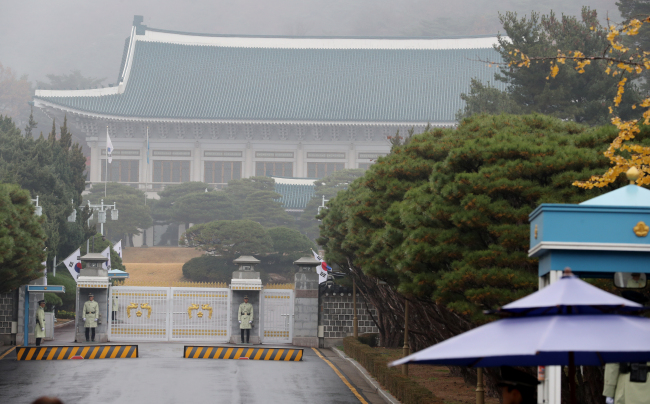您现在的位置是:半岛新闻网 > 行业动态
Trump’s “execute the baby” lie has a dangerously effective history.
半岛新闻网2024-09-22 01:49:29【行业动态】7人已围观
简介Popular in News & Politics The One Way Trump Could Surprise Us Now
Popular in News & Politics
- The One Way Trump Could Surprise Us Now
- Many Young Voters Have Turned on Biden. But a Different Group Just Might Rescue Him.
- White Nationalism’s Most Famous Young Escapee Has A Warning
- Alito’s Explanation for the Upside-Down American Flag Honestly Makes It Worse
On Saturday, at a rally in Green Bay, Wisconsin, Donald Trump repeated his absurd claim that pro-choice women and doctors are “executing” newborns and therefore must be stopped by stricter laws. The most recent version of Trump’s ginned-up nightmare, which the president has taken to conjuring on the campaign trail this year, referenced a bill advanced by state Republicans that would make doctors liable if they withhold medical care from a fetus that had survived an abortion attempt. Because doctors would already provide that care in such an (extremely unlikely) event, the Democratic governor has promised to veto it. But Trump’s fantasy brooks no facts: “The baby is born,” he declared. “The mother meets with the doctor. They take care of the baby. They wrap the baby beautifully. And then the doctor and the mother determine whether or not they will execute the baby.” (Cue righteous boos from the audience.)
How can the reality-based community, where it is understood that mother-doctor infanticide conspiracies are not real, even respond to a story like this? One response is: Tell the truth about the difficult circumstances around nonviable pregnancies. This time around, a former NICU nurse wrote a viral Twitter thread about what happens in a hospital after the birth of a baby too disabled to live. The last time Trump told this crazy story, in February, while discussing recent New York state legislation to expand abortion rights past the 24thweek in cases where the fetus isn’t viable or the mother’s life is threatened, OB-GYN and writer Jen Gunter described her own experience giving birth to a “son who was born to die” in a New York Times op-ed, titled “I Didn’t Kill My Baby.”
Advertisement Advertisement Advertisement AdvertisementBut none of these earnest and well-meant counternarratives are going to change the minds of people who already believe that women and doctors might actually do something like this. That’s because the story is much more than “bullshit,” a “lie,” or a “falsehood.” Trump’s abortion story is a piece of atrocity propaganda. It draws on a centuries-old trope—the cruel and capricious murder of infants—to confirm his supporters’ beliefs that the liberals and feminists living among them are, secretly, selfish monsters. And for those who’ve deployed it in the past, it has proved dangerously effective. This is why, out of all the terrifying crap that comes out of his mouth, I think it might be the scariest.
AdvertisementHere’s the history Trump is tapping. The most durable murdered-babies lie ever is the blood libel. Anti-Semitic accusations of Jewish ritual murder of children have fueled pogroms since at least the 12thcentury. (The Holocaust Encyclopedia finds mention of such charges against Jews as far back as the second century B.C.) Over the years, this idea that Jews kill children for their blood has found purchase in writings by people as integral to the “Western tradition” as Geoffrey Chaucer and Martin Luther. The Nazis made extensive use of the theme. In 1939, the cover of the anti-Semitic newspaper Der Stürmer featured a medieval depiction of a group of Jewish adults draining blood from a toddler while the bodies of five already-murdered children lie at their feet. Nor are such blood libels a relic of the past. As Talia Lavin has observed, the manifesto allegedly written by last weekend’s synagogue shooter contained a reference to Simon of Trent, a 2-year-old Christian boy who died in Italy in 1475 and whose death was used as pretext for a wave of anti-Semitic violence.
Advertisement Advertisement AdvertisementEven as Jews have borne the brunt of the baby-killing myth, propagandists for other causes have used it to their advantage. After the Irish Rebellion of 1641, in which Irish Catholics attacked Protestant settlers, depositions of witnesses to the events were published in London, shifting the tide of British opinion against the Irish. The witnesses often mentioned hearing of—but never seeing—Irish Catholics ripping open pregnant women, pulling out their babies, and beating them to death against rocks. In 1782, Benjamin Franklin, of all people, put together a counterfeit newspaper with an article supposedly describing atrocities committed by the Seneca Indians against colonial frontier families at the behest of the British government. (By telling this story, Franklin wanted to turn the British public against their government and give the new United States purchase at the peace negotiations that were ongoing at the time.) In this grisly fiction, a Seneca representative mailed a British agent a bunch of scalps of American frontier families, including scalps of boys and girls, as well as “29 little infant Scalps of various sizes; … a little black Knife in the middle to shew they were ript out of their Mothers’ Bellies.”
AdvertisementAnti-German propaganda during World War I was full of violently murdered babies. After the war, Arthur Ponsonby, a liberal member of Parliament interested in exposing the way such propaganda helped shape the public’s will to fight, published a report called “Falsehood in War-Time”(1929), which included a chapter titled “The Belgian Baby Without Hands.” In it, Ponsonby collected the many times that this story—that German soldiers invading Belgium had cut off babies’ and children’s hands and arms, often leaving them alive to serve as warnings to the populace—appeared in French, British, American, and Italian newspapers. In France, Ponsonby found, newspapers even embellished the story by “depicting German soldiers eating the hands.” The story of the handless baby or child traveled even further than the other tales of babies impaled on bayonets or nailed to doors, despite the fact that it seemed physically improbable that any child could survive such mutilation. “Everybody wanted to believe the story,” Ponsonby writes, “and many went so far as to say they had seen the baby.”
Advertisement Advertisement Advertisement AdvertisementDespite the modicum of caution Americans and British people felt toward anti-German propaganda after the baroque excesses of the run-up to the First World War, 1940s Americans were much more comfortable consuming propaganda that demonized the Japanese. And so the baby killers migrated east. Historian John Dower notes that, in an American propaganda film made during World War II, actors playing Japanese soldiers tossed Chinese babies onto bayonets.
The baby-killing fable still works to foment war. Most recently, in the run-up to the Gulf War, the American PR firm Hill & Knowlton, hired by the Kuwaiti government in exile, helped spread a dubiously sourced atrocity story about Iraqi soldiers ripping premature babies from incubators in a hospital so that they could carry off the machines, then leaving the infants on the floor to die. The story really went early-1990s viral when the daughter of Kuwait’s ambassador to the United States gave “testimony” about the incident, which she at first claimed to have witnessed (and later said she’d heard about from others), in front of a congressional committee.
AdvertisementBut here we have a president (who, always remember, probably doesn’t actually care whether anyone has an abortion) spreading baby-killing propaganda against his own people. In so doing, he’s contributing to what scholar Carol Mason calls “the apocalyptic narrative of pro-life politics.” Mason surveys books, pamphlets, speeches, and ephemera produced by and for anti-abortion activists between the 1960s and 2000s, and shows how they depicted the abortion debate as an epic battleground between good and evil. Through these stories, Mason writes, pro-life Christians came to see themselves as “a chosen minority facing a satanic majority hell-bent on providing abortions.” Trump’s story, clumsy though it may sound to the uninitiated, fits right into this cosmology.
Advertisement Advertisement AdvertisementIn 1984, sociologist Kristin Luker observed, after interviewing activists on either side of the abortion debate, that large amounts of “surprise, outrage, and vindictiveness” occur within conversations on this issue because it calls people’s “world views” into question—those ideals that are so deep inside us that we don’t even know how to name them. “Denying that one’s opponents are decent, honorable people is one way of distancing oneself from the unsettling thought that there could be legitimate differences of opinion on one’s most cherished beliefs,” Luker wrote.
For the anti-choice activists Luker interviewed, the possibility of choosing abortion strikes at the heart of their understanding of women’s purpose: to become mothers. That’s why the detail of the blanket in Trump’s story—“They wrap the baby beautifully”—sticks in the mind, as it’s meant to do. These baby-killing liberals, this story telegraphs to Trump’s base, are coldblooded and unnatural, offering care one minute and turning on their infants in the next. Possibly, the story says first, they aren’t even women. Possibly, it implies next, they aren’t even human.
Tweet Share Share Comment很赞哦!(45756)
相关文章
- Our galaxy might crash into Andromeda. What would happen to Earth?
- Germany orders Facebook to stop combining user data from WhatsAp
- NYPD to Google: Quit tracking drunk
- Sleep paralysis demon memes are back since everyone's lonely while social distancing
- US to oppose North Korean worker dispatch to occupied Ukrainian territory: State Dept.
- FightCamp review: We're all anxious right now and this at
- 与十个勤天一起喝英德红茶是什么体验?英德红茶亮相《种地吧》518“爱侬日”农文旅交流会
- 乘客不良言行谁来监管
- 抖音超600万次传播量!广东省农事运动会乡村直播大赛火出圈
- Hectic yet hilarious viral video shows how chaotic quarantine life is getting
热门文章
站长推荐

13 Places to Find Little Legends and Compact Cryptids

Celtic sweep past St Johnstone

Putting nuclear weapons back in S. Korea could be considered to pressure China to rein in NK: ex

Tokyo Olympics have been postponed to 2021 because of coronavirus
Cyrix: Gone But Not Forgotten

宝兴县 工业集中区将吸纳近千人就业

Now might be a good time to finally try a retinoid

What will the investigation into Park be like?